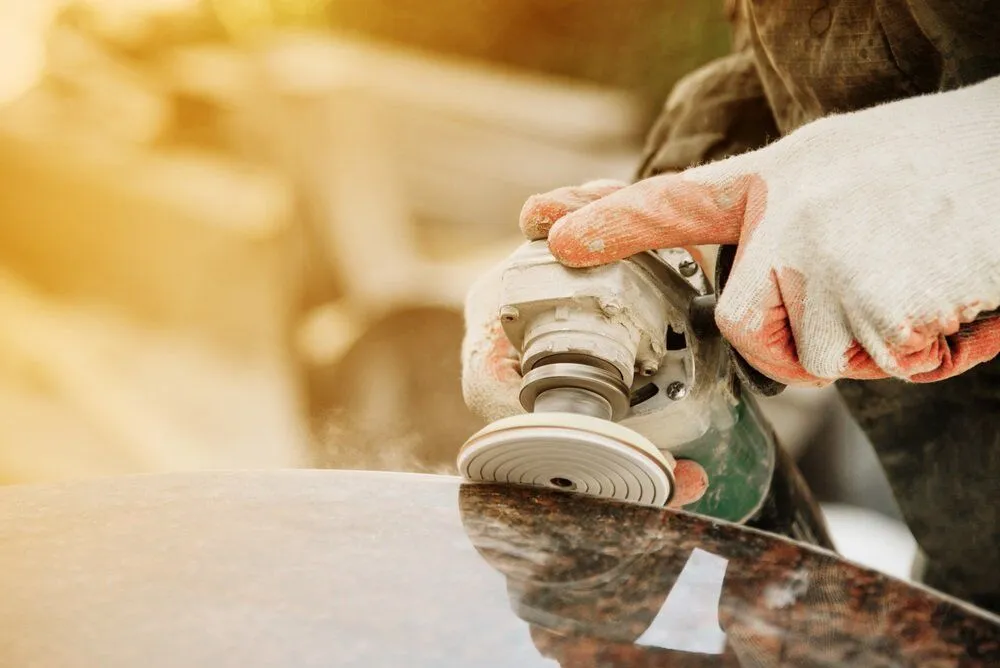Polishing granite requires precision, patience, and the right tools to bring out the stone’s natural beauty. Whether for countertops, floors, or other granite surfaces, using the proper polishing tools ensures a smooth, high-gloss finish. This article highlights some of the essential granite polish tools that help achieve professional results, transforming raw stone into a polished, refined surface.
For more information on a variety of granite polishing tools, visit BB Industries.
Essential Tools for Polishing Granite
Different tools serve specific purposes in the granite polishing process, from initial smoothing to achieving the final shine. Here are some of the essential granite polish tools:
- Diamond Polishing Pads: Diamond pads are embedded with diamond particles, making them durable and effective for smoothing granite surfaces. Available in various grit levels, these pads are ideal for removing imperfections and achieving a polished look.
- Angle Grinder: An angle grinder equipped with diamond pads or polishing discs is a versatile tool that helps with both rough cutting and refining granite edges. It allows for precise control in shaping and smoothing granite surfaces.
- Wet Polisher: A wet polisher is designed to work with water, reducing dust and keeping the granite cool during polishing. It’s especially useful for achieving a finer finish and preventing cracks in the stone due to heat.
- Buffing Pads: Buffing pads are used in the final stages of polishing to create a high-gloss, reflective finish. They remove any last imperfections, resulting in a smooth, flawless surface.
- Polishing Compound: A polishing compound is often applied with buffing pads to enhance the stone’s shine. It helps to bring out the granite’s natural luster, making it look polished and refined.
Each of these tools plays a critical role in the granite polishing process, from initial smoothing to the final gloss.
Selecting the Right Granite Polishing Tools
Choosing the appropriate polishing tools depends on the project’s needs and the desired finish for the granite. Consider the following factors:
- Grit Level: Diamond pads and buffing pads come in different grits, from coarse to fine. Starting with a coarser grit and progressing to finer grits allows for gradual refinement of the surface.
- Wet vs. Dry Polishing: Wet polishing tools, like wet polishers, are ideal for reducing dust and achieving a smoother finish. Dry pads are more convenient for projects where water isn’t accessible.
- Tool Compatibility: Ensure that polishing pads and discs are compatible with the grinder or polisher being used. Using the right size and type helps maintain control and achieve consistent results.
- Durability and Quality: High-quality tools are essential for long-lasting performance. Durable pads, discs, and compounds ensure effective polishing over time, contributing to the quality of the finish.
Selecting tools based on these factors helps achieve a polished surface that meets professional standards.
For a range of options, check out granite polish tools to find suitable tools for your granite project.
Steps for Polishing Granite with Professional Tools
Achieving a polished granite finish involves a series of steps, each requiring specific tools for optimal results:
- Initial Smoothing: Begin with a coarse diamond pad to smooth the surface and remove any visible imperfections. This step helps level the surface and prepares it for finer polishing.
- Refining with Finer Grits: Progressively switch to finer grit diamond pads, gradually refining the surface. Each grit level removes the scratches from the previous one, creating a smoother finish.
- Use of Wet Polisher: If using a wet polisher, continue with finer grit pads to achieve a consistent and refined finish. The water helps control dust and keeps the granite cool.
- Final Buffing: Apply a buffing pad with a polishing compound to bring out a high-gloss shine. This step enhances the granite’s appearance, leaving a mirror-like finish.
- Clean the Surface: Wipe down the granite with a clean cloth to remove any residue or compound, revealing a polished, smooth surface.
These steps, combined with the right tools, ensure a polished finish that enhances the look and durability of granite.
Maintenance Tips for Granite Polishing Tools
Maintaining granite polishing tools extends their lifespan and ensures consistent performance:
- Rinse Pads After Use: Clean diamond pads and buffing pads with water after each use to remove residue and prevent clogging.
- Store Properly: Allow tools to dry completely before storage, especially wet polishing pads, to prevent mold or damage.
- Inspect Regularly: Check tools for signs of wear, particularly diamond pads, which can become less effective over time. Replacing worn pads helps maintain the quality of the polish.
Regular maintenance of polishing tools ensures they remain in optimal condition, allowing for professional-grade finishes on future projects.
Achieving a Professional Finish on Granite Surfaces
Using high-quality granite polishing tools helps achieve a flawless, polished finish that highlights the stone’s natural beauty. By selecting the right tools and following a careful polishing process, users can transform granite surfaces into smooth, reflective features that enhance any space. With a wide range of tools available, BB Industries provides the resources needed to approach granite polishing with confidence and achieve professional results.










